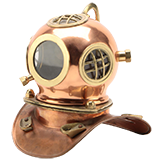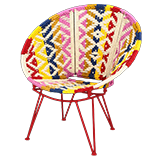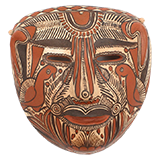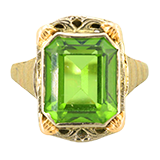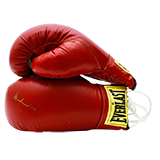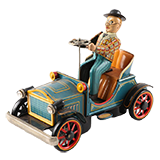Seller Story: Georgetown, OH
Most of this sale comes from our farm in Georgetown, Ohio, which I just sold. It’s a very historic place, 135 years old, on 165 acres. We bought it more than 50 years ago with $100 down. My wife Judy, who has since passed on, was a historian and loved antiques. She saw an ad in the Cincinnati Enquirer for an auction in Georgetown, and through a series of connections we found ourselves walking this property and falling in love. For the next 50 years, we went to every antique auction we could and filled the house.
I grew up in Cincinnati, where John James Audubon lived in the 1820s, and I was always a hunter and a fisherman, and always an artist. My family didn’t have a lot, but we had a lot of love. They saw I had a talent and encouraged me to draw. I was sent to the Cincinnati Art Museum to attend a drawing class when I was 8 years old, and I was a cartoonist in high school. At 18, I was drafted, and before I shipped out on a destroyer escort, I was sent to Miami to do posters and be an art director for the Navy.
I wanted to include some of my work in the auction, and I thought about “Decoy,” that it would be nice to pass along to someone who wants something historic. In 1978, the U.S. government wanted to give Leonid Brezhnev, General Secretary of the Communist Party, a Christmas gift, and he was evidently a duck hunter. They commissioned me to do a painting of a black labrador named Decoy. In doing the print, I called the language education company Berlitz and said I want a translation of the word “decoy.” I dutifully printed 500 art prints, and when I sent the first one to the Soviet ambassador for his approval, he called me on the phone and said, “You’ve almost caused an international incident!” The word I had put on all 500 prints actually meant “political entrapment.” So I redid them with the correct translation, but this one is one of the originals, with the incorrect word.


John Ruthven Artist Proof Offset Lithograph "Philippine Eagle"

Antique 1799 Volume of Songs For the Bath Harmonic Society

Antique Pine Table With Leather Inlaid Top

Antique Leather Duck Decoys

John Ruthven Offset Lithograph "Pintails"

Antique Leather-Bound Ledger

John Ruthven Signed Offset Lithograph Print of "Eden Park"

Vintage German Silver Art Nouveau Hand Mirror

Antique Brass Shaving Mirror

Vintage Japanese Partridge Incense Burner

Antique Country Sheraton Chest of Drawers

1920 Abercrombie & Fitch Catalog Plus Volume II of Blaine's Rural Sports

Russian Version of John A. Ruthven's Decoy Offset Lithograph Print

Two-Volume Set of Trollope's "What I Remember" Dated 1887

Richard E. Bishop "Whitebacks" Print

Antique English Walnut Cabinet

Set of Shaker Boxes

Antique Eider Duck Decoy

Vintage Fiction Books

Antique Wood Coal Box With Fireplace Accessories

Caroline Williams Print and Book

Vintage U.S. Navy Block and Tackle and Round Pulley Wheel

Maryland and Baltimore Journal Newspaper From 1773

World War I Helmet and WW II Boots

Woolson's Wall-Mount Display Spice Rack and Front of Shipping Crate

Trio of Antique Spaul Duck Decoys

Antique Shaker Bucket and Wood Potato Masher

Equestrian Fox Hunting Prints

John Ruthven Stone Lithograph Print of Canvasback Ducks on the Wing

Early 20th Century Star Pattern Quilt

Trio of Antique Hand Mirrors

Vietnamese Woodblock Print of Soldier and Panda

You also restored Ulysses S. Grant’s boyhood home and schoolhouse.
Georgetown was Grant’s boyhood home. Judy had always loved American history, and when we moved to Georgetown and realized Grant was so embedded in the history of the town, she became immersed in it. If our life was an opera, I liked to say that Judy was the star and I was the spear carrier—I went along with everything she did. Grant’s house was slated for demolition, and we bought it and restored it with the help of the U.S. Historical Society. In 2002, we donated the house to the state of Ohio, and it’s now open to the public. The iron gates in the auction are from the homestead.
What other pieces of note?
I did the Philippine Eagle for Ferdinand Marcos, then-President of The Philippines. It represents one of the rarest and largest birds in the world. It was originally called the monkey-eating eagle, but after an hour-long conversation in the president’s private office in the palace, he changed the name to the Philippine Eagle. I was lucky to see one when I spent two weeks in the jungle with Judy and a Filipino guide. And the WWII boots are from a German soldier. My wife’s brother fought in the Battle of the Bulge and he took them home as a souvenir. The World War I helmet also came from him—he found that somewhere and gave it to Judy because their father had been a WWI hero.
There are some exquisite quilts—was Judy a collector?
She loved quilts. Some of these are really rare—it’s considered one of the finest collections around. People would borrow them for different shows, like the Georgetown County Fair. Some of them have Judy’s name and phone number on them, so that when people saw them on display and wanted to know more, they could call her, and she’d give the history of the quilt. She also loved mirrors. In the bathroom in Georgetown she festooned about 15 all over the wall. So you could see yourself in any angle.
